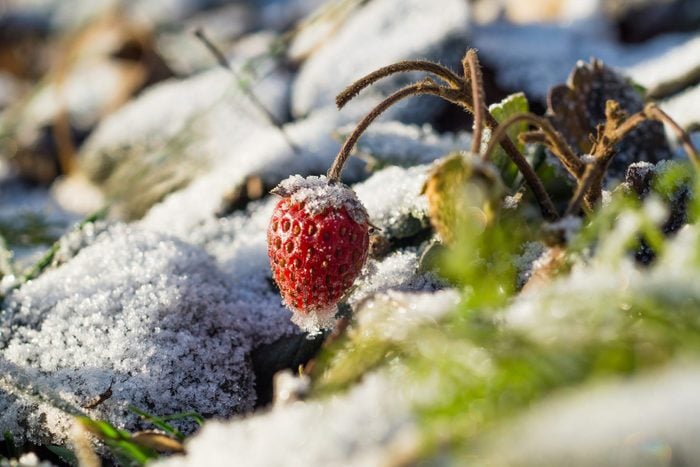How To Winterize Strawberry Plants
Updated: Apr. 03, 2023

Wonder why they call them STRAWberries? It has to do with how to winterize strawberry plants and the best layer of protection to use.
I love walking over to my strawberry bed in early summer to pick ripe berries to snack on. Then on the coldest days of winter, I dream about how good those homegrown strawberries are. I also think about how glad I am that I took the time to winterize my strawberry bed so there’ll be more berries next summer.
Why Winterize Strawberry Plants
Strawberries are generally considered hardy enough to grow in U.S. Department of Agriculture Plant Hardiness Zones 4 through 8. But the crown of the strawberry plant can die if temperatures dip below 20 degrees and they haven’t been protected. If you live where it’s that cold, take extra steps to winterize your strawberries.
Another reason to winterize strawberries: Alternate periods of freezing and thawing can cause strawberry plant roots to heave out of the ground and dry out.
When To Winterize Strawberry Plants
There’s no need to rush to do this before late fall. Give your strawberry plants a chance to acclimate to the cold weather. They’ll stop growing and be fine even as temperatures dip below freezing.
We don’t take the final steps of preparing strawberry plants for winter until November for the coldest zones and into December for USDA Zone 6. Get to know the difference between mock and wild strawberry plants.
Tools and Materials for Winterizing Strawberry Plants
If you live in colder USDA zones, you’ll need to mulch or cover your strawberry plants with something. A four- to six-inch layer of clean straw works well.
When purchasing locally, make sure it’s straw and not hay. Hay contains lot of weed seeds. Also be sure the straw wasn’t treated with a herbicide. Residue from the herbicide might damage your strawberries.
Other options for mulching strawberries include pine needles or any coarsely chopped plant material that doesn’t mat down when wet or have weed seeds.
How To Winterize Strawberries
Follow these steps to protect your strawberry plants. When you’re done, learn how to winterize your vegetable garden next.
Strawberry plants in the ground
To winterize your strawberry plants in the ground:
- Weed the bed before the ground freezes.
- If your fall is dry, continue to water until plants go dormant, especially if it’s a new bed.
- If you live where temperatures dip below 20 degrees, or where conditions alternate between freezing and thawing, cover your strawberries with a four- to six-inch layer of straw once the ground starts to freeze and plants go dormant.
In spring, once strawberry plants begin to grow again, remove the straw. You can leave some straw on the ground around the plants, which keeps fruit off the bare ground. Stash the remaining straw nearby. If the plants begin to flower and frost is predicted, cover the plants again with the same straw.
Strawberry plants in pots
Overwintering strawberry plants in pots can be challenging. At around the same time you’d winterize the plants in the ground, move your pots to an unheated garage or outbuilding where they can be kept cold enough to stop growing. Check the soil occasionally and water sparingly to keep it moist but not wet.
Another option: Bury the container in the garden, leaving the top exposed, then cover it with straw.
If your plants don’t grow back in the spring, pull them out, replace some of the potting soil and start over with new plants.
